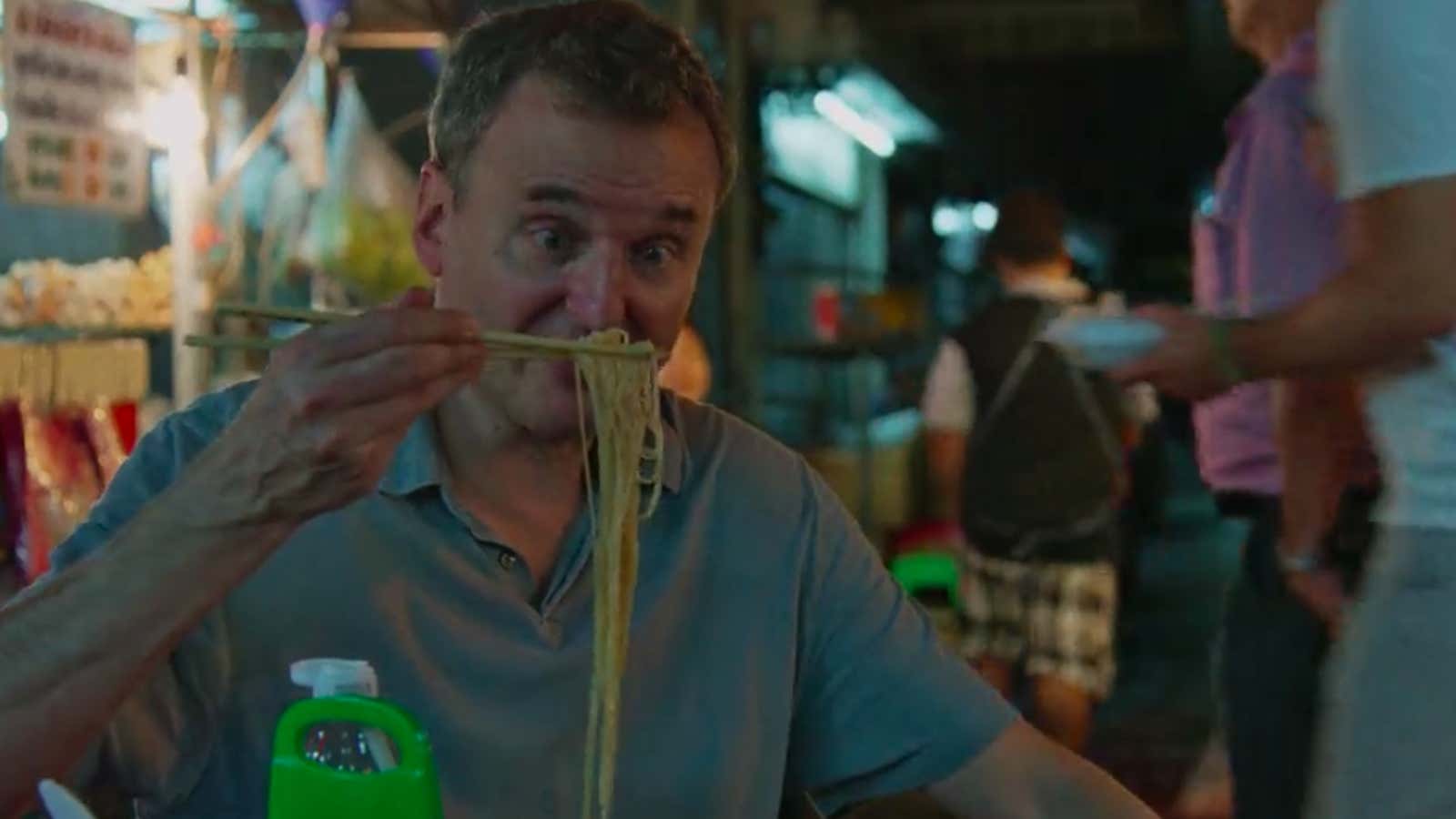There is no reason I should like watching Phil Rosenthal travel around the world eating delicious things. He created Everybody Loves Raymond, one of my least favorite television shows. His humor lives at the intersection of Borscht Belt Avenue and Dad Jeans Street. He’s not a chef or even a passionate home cook, and he doesn’t know very much about food except for that he likes it. I was prepared to hate Somebody Feed Phil, a newish Netflix-produced version of what started out as a PBS show called I’ll Have What Phil’s Having, but instead Rosenthal won me over completely. He’s making some of the best food travel television out there right now.
Not being a chef with something to prove is the key to Rosenthal’s appeal. Turns out it’s much more fun to watch a passionate amateur who is continually delighted by new people, flavors and ingredients, than it is to watch a world-weary chef mansplain his way around the globe.
The format of Somebody Feed Phil will be instantly familiar to anyone who has ever spent more than 15 minutes watching either the Food Network or the Travel Channel. Rosenthal travels to a city, chats with local restauranteurs, cooks and food media types, and heartily samples the local cuisine. Here’s where this show departs from the others in its genre. Rosenthal is consistently enthusiastic, and seems to continually renew a sense of wonder and appreciation for the experience he’s having.
Even when he’s eating things that are way out of his comfort zone, there’s no performative disgust on this show. Rosenthal isn’t specifically seeking out ingredients that will freak out his viewers, but he’s not avoiding anything either. Rosenthal gamely tries braised udders and beef lung tacos in Mexico City as well as unfamiliar fish parts and ants in Japan, displaying characteristic enthusiasm for what he finds delicious (beef lung tacos), and calmly making it clear that other items are just not for him (bean-filled Thai pastries). There are no paroxysms of revulsion, as has become common on similar shows.
The way Rosenthal expresses the near universal human pleasure that comes from putting something tasty in your mouth is also refreshing. Food television has cast eating as an almost overtly sexual endeavor—moans of approval and facial expressions akin to bedroom faces have become the norm for signaling approval. There is none of that on this show. Rosenthal’s typical reaction to food he finds pleasing is much closer to what you’d expect to see from a five-year-old at a make-your-own-sundae bar than something you’d find late night on Cinemax. Seriously, you have no idea how tired of foodgasm face your were until you watch a show without it.
Netflix is also currently home to six seasons of Parts Unknown, Anthony Bourdain’s hipster tour of the world, which just makes traveling seem exhausting and inaccessibly cool. Subscribers can also watch Ainsley Eats the Streets, an exploration of street food with Ainsley Harriot, a British chef and television personality. This show makes the mistake of having its host cook his own versions of the items he samples, which may have sounded like a cool twist on the formula, but just comes across as presumptuous.
Venturing onto basic cable you’ll find Bizarre Foods, in which Andrew Zimmern, also a chef and food television star, searches out international food customs that are the most likely to disgust a staid Western viewer and eats them with gratuitously disgusted relish. At their worst, these chefs are mansplainy and practice an uncomfortable sort of culinary orientalism. Even at their best, they’re just not that great a stand-in for your average viewer—they’re having experiences you couldn’t, or wouldn’t want to, have.
Phil Rosenthal isn’t just a great stand-in for the average traveler—a person who doesn’t profess expert knowledge, and is willing to play the fool to learn something new. He’s a kind of traveler that the viewer can really get behind, a sort of antithesis to the ugly American. He’s unfailingly polite and enthusiastic. He recognizes that it’s a privilege to be hosted. He’s kind to children. There are a few awkward moments where he hugs cooks whose food he loves in what is very obviously a big break from local custom. But considering everything else we could attribute to American travelers, even this is just fine. He acts the way we would like to think we would act, traveling on an unlimited budget with access to guides and fixers—in Mexico City he tastes a taco al pastor from a street cart that he loves so much that he offers to buy everyone passing by their own plate of tacos.
In a Boston Globe article (paywall) that came out after the debut of I’ll Have What Phil’s Having (also available on Netflix right now), Rosenthal tells the reporter that his goal for the show was to make people want to travel who hadn’t before. Not only does it seem like he’s accomplished that, he’s also showing them how to do it well.
